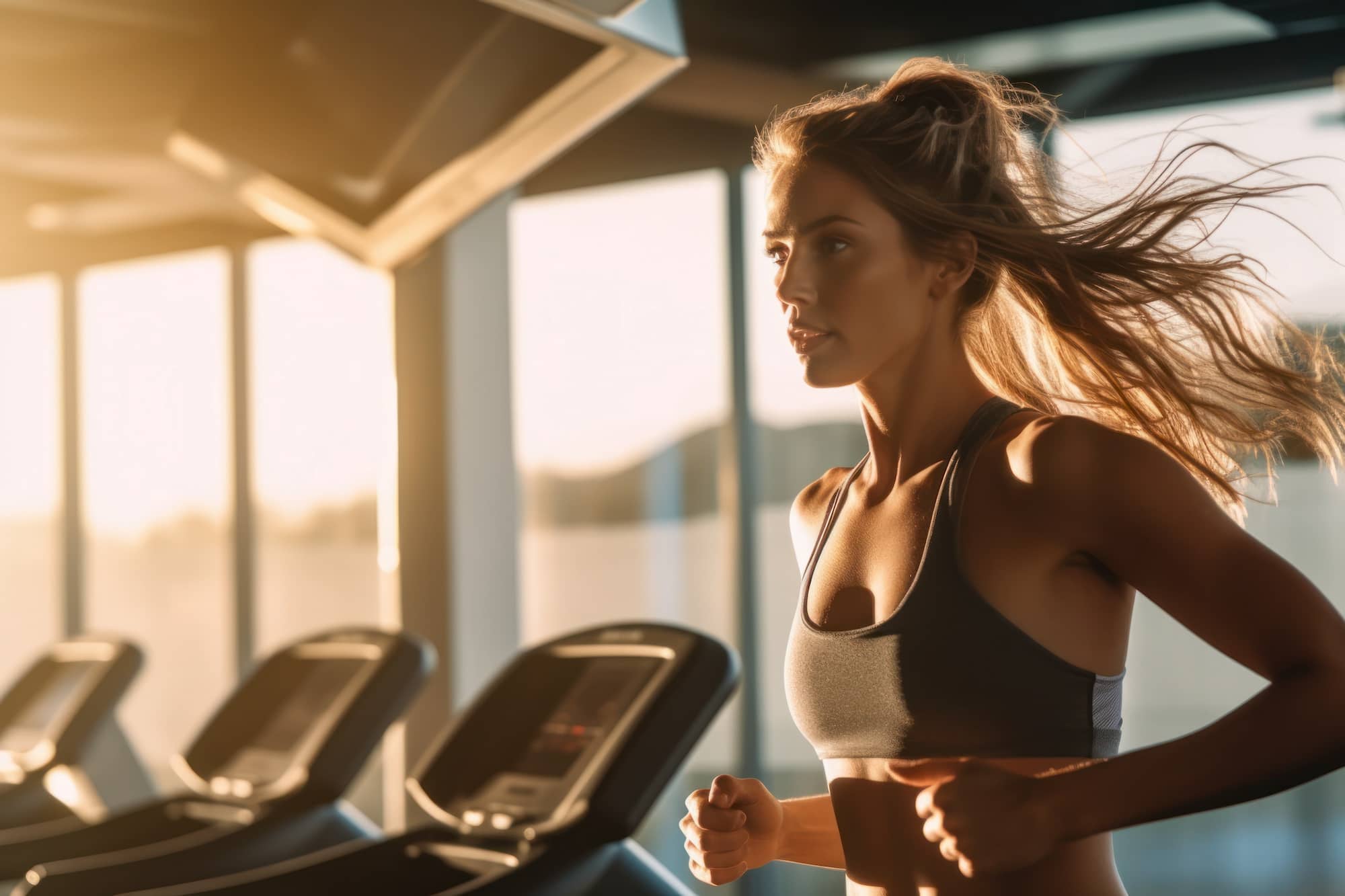Blog
The Immune System
Chiropractic treatment is increasingly recognized for its potential to boost the immune system. We offer a holistic approach that extends beyond mere pain relief. Focusing on spinal health and the nervous system, aiming to optimize the body’s natural healing abilities, leading to a stronger immune response.
One of the primary ways chiropractic treatment supports immune function is by ensuring proper alignment of the spine. The spine houses the spinal cord, which serves as the main pathway for communication between the brain and body. When the spine is misaligned, it can interfere with communication, leading to dysfunction in various systems, including the immune system. Chiropractors use spinal adjustments to realign the vertebrae, relieving pressure on the nerves and restoring optimal nervous system function.
Furthermore, research suggests that chiropractic adjustments can positively impact the autonomic nervous system, which plays a role in regulating immune function. By enhancing autonomic function through spinal manipulation, chiropractic helps to balance the sympathetic and parasympathetic branches of the nervous system. Thereby promoting overall wellness and resilience against illness.
Another way chiropractic treatment aids the immune system is by reducing stress levels. Chronic stress has been shown to weaken immune function, making individuals more susceptible to infections and illness. Stress can also contribute to muscle tension and spinal misalignments. Through gentle adjustments and soft tissue therapies, chiropractors help to alleviate tension and promote relaxation, thereby reducing the detrimental effects of stress on the body’s immune defenses.
Additionally, chiropractic care emphasizes a healthy lifestyle, including proper nutrition, regular exercise, and adequate sleep – all of which are essential for a robust immune system. Chiropractors often provide guidance on dietary choices and lifestyle modifications to support overall health and well-being. By addressing underlying issues such as poor posture, nutritional deficiencies, or sedentary habits, chiropractic treatment fosters an environment conducive to optimal immune function.
Chiropractic adjustments have been shown to stimulate the release of endorphins, the body’s natural painkillers, and neurotransmitters that promote feelings of well-being. This neurochemical response not only helps to alleviate pain but also boosts mood and enhances immune function. By addressing both physical discomfort and emotional stress, chiropractic care promotes a state of balance and harmony within the body, allowing the immune system to function at its best.
In other words, chiropractic treatment offers a multifaceted approach to enhancing immune function. Focusing on spinal health, nervous system function, stress reduction, and overall wellness. By addressing the underlying causes of dysfunction and promoting natural healing mechanisms, chiropractors empower individuals to strengthen their immune defenses.
Click here to contact our Office or call 708-922-1400
Nutrition
Nutrition plays a pivotal role in maintaining optimal health and well-being, influencing various bodily functions and processes. Proper nutrition provides essential nutrients that support growth, repair tissues, boost immunity, and sustain overall vitality. However, many individuals struggle to achieve balanced nutrition due to busy lifestyles, dietary preferences, or misinformation. This is where chiropractic practitioners can significantly assist their patients in achieving better health outcomes through education, guidance, and personalized nutritional recommendations.
Chiropractic practitioners are well-positioned to address nutritional concerns as they typically have a holistic approach to healthcare, focusing on the body’s innate ability to heal itself when provided with the right conditions. They understand the intricate connections between the spine, nervous system, and overall health, recognizing that nutrition plays a fundamental role in maintaining spinal health and overall well-being.
One of the primary ways chiropractors can help is by educating patients about the importance of nutrition in supporting musculoskeletal health. Nutrient-rich foods such as fruits, vegetables, lean proteins, and healthy fats provide the building blocks necessary for strong bones, muscles, and connective tissues. By emphasizing the role of nutrition in preventing conditions like osteoporosis, arthritis, and muscle weakness, chiropractors empower patients to take proactive steps toward better health.
We can also assess patients’ dietary habits and provide personalized nutritional recommendations tailored to their specific needs and goals. Through detailed consultations and assessments, chiropractors can identify nutritional deficiencies, imbalances, or dietary patterns that may be contributing to musculoskeletal issues or other health problems. They can then develop individualized nutrition plans that focus on optimizing nutrient intake, improving dietary quality, and promoting overall wellness.
In addition to dietary recommendations, chiropractors may also incorporate nutritional supplements into their treatment plans to address specific health concerns or deficiencies. Supplements such as vitamins, minerals, and herbal extracts can complement a healthy diet and support the body’s natural healing processes. Chiropractors can guide patients in selecting high-quality supplements and advise them on proper dosages and usage to maximize effectiveness and safety.
Furthermore, chiropractic can enhance the body’s ability to absorb nutrients by optimizing spinal alignment and nervous system function. Misalignments in the spine, known as subluxations, can impede proper nerve signaling and disrupt the body’s ability to absorb and utilize nutrients efficiently. Through spinal adjustments and other chiropractic techniques, practitioners can restore proper alignment, alleviate nerve interference, and promote optimal nutrient absorption and utilization.
By integrating nutrition into their holistic approach to healthcare, chiropractors can empower patients to make informed choices that support their overall health and well-being. Through education, personalized guidance, and hands-on care, chiropractors play a vital role in helping individuals achieve and maintain optimal nutrition and vitality for a healthier life.
Click here to contact our Office or call (708) 922-1400
Weight Loss
Chiropractic care isn’t just about alleviating back pain—it can be a valuable asset in achieving weight loss goals as well. Through a holistic approach that focuses on spinal alignment and optimizing nerve function, chiropractors can support individuals in their quest for a healthier weight and overall well-being.
One of the key ways chiropractic care aids in weight loss is by addressing spinal misalignments, also known as subluxations. These misalignments can disrupt communication between the brain and the body, leading to various health issues, including difficulties in managing weight. By performing spinal adjustments, chiropractors help to realign the spine, restoring proper nerve function and promoting optimal bodily function.
Furthermore, chiropractors provide personalized guidance on lifestyle factors such as nutrition, exercise, and stress management. They understand that achieving and maintaining a healthy weight requires more than just occasional adjustments—it involves making sustainable lifestyle changes. By offering tailored recommendations, chiropractors empower individuals to make healthier choices and adopt habits that support their weight loss goals.
In addition to spinal adjustments, chiropractic care can address underlying issues that may be hindering weight loss progress. Chronic pain and inflammation, for example, can make it challenging to engage in physical activity and adhere to a weight loss plan. Through techniques such as massage therapy and corrective exercises, chiropractors can help alleviate pain and inflammation, making it easier for individuals to stay active and committed to their weight loss journey.
Regular visits to a chiropractor also provide accountability and support. Individuals can track their progress, discuss any challenges they may be facing, and receive encouragement from a healthcare professional who is dedicated to their success. This ongoing support can be instrumental in staying motivated and overcoming obstacles along the way.
It’s important to recognize that while chiropractic care can be beneficial, it is most effective when combined with other healthy habits. Eating a balanced diet, engaging in regular physical activity, getting enough sleep, and managing stress are all essential components of a successful weight loss plan. By integrating chiropractic care into a comprehensive approach to health and wellness, individuals can maximize their chances of achieving and maintaining their desired weight.
Click here to contact our office or call 708-922-1400
Wellness Planning
Wellness planning is an active and strategic process individuals undertake to enhance their overall health and well-being. It involves proactive measures such as adopting healthy habits, managing stress, and maintaining a balanced lifestyle. One valuable resource in this endeavor is a visit to Dr. Diane Barton’s office, which offers a range of services and expertise to support individuals in their wellness journey.
At Dr. Barton’s office, individuals can receive personalized guidance and treatment to address various aspects of wellness. Chiropractors specialize in spinal health and nervous system function, recognizing the central role these systems play in overall health. Through spinal adjustments and manipulations, we can help alleviate pain, improve mobility, and enhance the body’s ability to function optimally.
In addition to spinal adjustments, we provide holistic care that encompasses lifestyle modifications, exercise recommendations, and nutritional guidance. We work closely with patients to develop wellness plans tailored to their specific needs and goals. This may include designing exercise routines to improve strength and flexibility, offering ergonomic advice to prevent workplace injuries, or suggesting dietary changes to support overall health.
Furthermore, we are well-versed in the interconnectedness of the body’s systems and understand how imbalances in one area can impact overall well-being. By addressing underlying issues such as poor posture, muscle imbalances, or spinal misalignments, we can help individuals achieve better alignment and function throughout their bodies, leading to improved health and vitality.
Chiropractic care emphasizes a proactive approach to wellness, focusing on prevention rather than simply treating symptoms. Regular visits to our office can help individuals identify and address potential health concerns before they escalate into more serious problems. By maintaining spinal health and promoting proper nervous system function, chiropractors support the body’s natural ability to heal and adapt, enhancing overall resilience and vitality.
Beyond physical health, chiropractic care also recognizes the importance of mental and emotional well-being in overall wellness. Many chiropractors incorporate techniques such as relaxation exercises, mindfulness practices, or stress management strategies into their treatment plans to help individuals achieve greater balance and harmony in their lives.
Our office can be a valuable ally in the pursuit of wellness planning. Through a combination of spinal adjustments, lifestyle recommendations, and holistic care, we support individuals in achieving optimal health and well-being. By taking an active role in their wellness journey and partnering with us, individuals can enhance their quality of life and enjoy greater vitality for years to come.
Click here to contact our office or call 708-922-1400
Stress
Chiropractic care offers a holistic approach to combating stress, providing relief that goes beyond merely addressing physical symptoms. By targeting the root causes of stress and tension, chiropractic adjustments promote overall well-being and resilience. Here’s how chiropractic care can help alleviate stress:
- Spinal Alignment: Chiropractic adjustments focus on aligning the spine, which can become misaligned due to poor posture, repetitive motions, or injury. When the spine is properly aligned, it allows for optimal nerve function. Misalignments can cause nerve interference, leading to increased muscle tension. By realigning the spine, chiropractors help restore proper nerve flow, reducing tension and promoting relaxation.
- Muscle Relaxation: Often manifesting itself as muscle tension, particularly in the neck, shoulders, and back. Chiropractic adjustments release tension in the muscles, promoting relaxation and alleviating discomfort. Through manual manipulation techniques, chiropractors target specific areas of tension, encouraging muscles to relax and loosen up.
- Improved Circulation: It can also restrict blood flow, leading to feelings of fatigue and exacerbating tension in the body. Chiropractic care enhances circulation by removing restrictions in the musculoskeletal system. Improved blood flow delivers oxygen and nutrients to tissues more efficiently, promoting healing and reducing the physical effects of stress.
- Stress Hormone Regulation: Chronic stress can dysregulate hormone levels in the body, leading to a cascade of physiological effects. Chiropractic adjustments have been shown to influence hormone balance, particularly cortisol levels. Cortisol, often referred to as the stress hormone, can contribute to feelings of anxiety and tension when elevated. Regular chiropractic care can help regulate cortisol levels, promoting a more balanced stress response.
- Enhanced Nervous System Function: The nervous system plays a crucial role in the body’s stress response. When the spine is misaligned, it can create interference in the nervous system, exacerbating stress and tension. Chiropractic adjustments remove this interference, allowing the nervous system to function optimally. By improving nervous system function, chiropractic care helps the body better cope with stressors and maintain a state of equilibrium.
- Promotion of Mind-Body Connection: Chiropractic care emphasizes the connection between physical health and mental well-being. By addressing physical imbalances and promoting alignment, chiropractors help facilitate a harmonious mind-body connection. This integration supports overall resilience to stress and enhances the body’s ability to adapt to life’s challenges.
Chiropractic care offers a comprehensive approach to the management of this problem by addressing physical, neurological, and hormonal factors. Through spinal adjustments, muscle relaxation techniques, and promotion of overall well-being, chiropractors provide valuable support in combating the effects of this concern. Click here to contact our office or call (708) 922-1400
Chiropractic care during pregnancy
Chiropractic care during pregnancy is gaining recognition as a safe and effective way to support the well-being of both the expectant mother and her growing baby. The spine undergoes significant changes during pregnancy, leading to various discomforts such as back pain, pelvic pain, and postural issues. Chiropractic adjustments can play a crucial role in alleviating these discomforts and promoting overall wellness.
One of the primary benefits of chiropractic care during pregnancy is the relief of back pain. As the baby grows, the mother’s body goes through a myriad of changes, including a shift in her center of gravity. This adjustment often leads to increased stress on the spine, causing pain and discomfort. Skilled chiropractors can use gentle and specialized techniques to realign the spine, reducing tension and promoting a more balanced and comfortable posture.
Pelvic pain is another common issue during pregnancy, often associated with hormonal changes and the body preparing for childbirth. Chiropractic care focuses on maintaining proper pelvic alignment, which can alleviate pain and improve overall mobility. By addressing pelvic misalignments, chiropractors help create an optimal environment for the baby’s growth and development while ensuring the mother’s comfort.
Maintaining a healthy nervous system is crucial during pregnancy, as it directly impacts the body’s ability to function optimally. Chiropractic adjustments facilitate a well-functioning nervous system by removing interference caused by spinal misalignments. This, in turn, can enhance the body’s natural ability to adapt to the physiological changes occurring during pregnancy.
Chiropractors also play a crucial role in supporting overall maternal well-being. Pregnancy often brings about hormonal fluctuations, mood swings, and increased stress. Regular chiropractic care has been shown to contribute to a healthier mental and emotional state by reducing stress and promoting relaxation. This is particularly beneficial for expectant mothers as they navigate the physical and emotional challenges of pregnancy.
Furthermore, chiropractic care can positively impact the birthing process itself. When the spine and pelvis are properly aligned, it can create an optimal environment for the baby to move into the correct position for birth. This, in turn, may contribute to a smoother labor and delivery process.
It’s important to note that chiropractors who specialize in prenatal care use techniques that are safe for both the mother and the baby. These adjustments are gentle and tailored to the unique needs of pregnant women.
Family Chiropractic N.J. offers a holistic approach to supporting pregnant women by addressing the physical, emotional, and neurological aspects of well-being. By promoting spinal alignment, reducing discomfort, and enhancing overall health, chiropractic care plays a valuable role in ensuring a positive and comfortable pregnancy experience. Call 708-922-1400 or click here to contact us.
Posture
Postural disorders, characterized by misalignments or abnormalities in the body’s posture, can have a significant impact on overall health and well-being. Addressing these issues is crucial, and chiropractors play a pivotal role in providing active solutions to alleviate discomfort and improve posture.
Chiropractors actively assess and treat postural disorders by employing a hands-on, proactive approach. Through a thorough examination, they identify imbalances, misalignments, and musculoskeletal issues that contribute to poor posture. This active diagnostic process enables chiropractors to tailor their interventions to the specific needs of each individual, recognizing that postural problems can vary widely among patients.
Chiropractors actively engage with their clients to educate them about the importance of proper posture. This involves not only addressing the immediate issues but also actively empowering individuals to actively participate in their own postural health. Through active communication and education, chiropractors guide their patients in understanding the detrimental effects of poor posture on the spine, joints, and overall well-being.
One active method employed by chiropractors to address postural disorders is spinal adjustments. Through precise and targeted manipulations, chiropractors actively correct misalignments in the spine, promoting optimal alignment and reducing strain on surrounding muscles and joints. This hands-on approach actively restores proper biomechanics, allowing the body to function more efficiently and reducing the likelihood of further postural issues.
Chiropractors also actively incorporate therapeutic exercises into their treatment plans. These exercises are designed to strengthen muscles, improve flexibility, and actively promote better posture. By actively engaging patients in therapeutic exercises, chiropractors empower them to actively participate in their recovery, fostering long-term improvements in postural alignment and overall musculoskeletal health.
In addition to hands-on interventions, chiropractors actively collaborate with patients to develop personalized plans for postural improvement. This may involve lifestyle modifications, ergonomic adjustments, and active strategies to incorporate better posture into daily activities. This collaborative approach emphasizes the active role that individuals play in maintaining and sustaining the benefits of chiropractic care for postural disorders.
Furthermore, chiropractors actively advocate for preventive measures to avoid future postural issues. Through ongoing consultations and active monitoring, they guide patients in making active lifestyle choices that support good posture and overall spinal health. This proactive approach aligns with the philosophy of chiropractic care, which emphasizes not only the resolution of existing issues but also the prevention of future problems through active patient engagement.
Dr. Barton actively addresses postural disorders through a comprehensive and hands-on approach. Her active involvement in diagnosis, education, hands-on interventions, and collaborative planning empowers individuals to actively improve their posture and enhance their overall musculoskeletal health.
Contact us by clicking here or call (708) 922-1400
Relieving Pain
Relieving Pain Through Chiropractic Care: An Active Approach to Wellness
Pain, whether chronic or acute, can significantly impact one’s quality of life. Chiropractic care emerges as a proactive and effective solution for individuals seeking relief from various types of pain. By addressing the root causes of pain through spinal adjustments and holistic approaches, chiropractors play a crucial role in promoting overall well-being.
Chiropractic care focuses on the musculoskeletal system, recognizing the intricate connection between the spine, nervous system, and overall health. Many types of pain, including back pain, neck pain, and headaches, often stem from misalignments or dysfunction within the spine. Chiropractors employ hands-on adjustments to correct these issues, restoring proper alignment and alleviating pain at its source.
One of the key advantages of chiropractic care in pain management is its non-invasive nature. Unlike traditional medical interventions that may rely on medications or surgery, chiropractic adjustments offer a drug-free and surgery-free alternative. This approach not only provides relief from pain symptoms but also promotes the body’s natural healing processes.
Chiropractors utilize a variety of techniques tailored to the specific needs of each individual. Spinal adjustments, soft tissue manipulation, and therapeutic exercises are among the tools employed to address pain conditions comprehensively. By focusing on the underlying causes of pain, chiropractic care aims to bring about lasting relief and prevent recurrent issues.
Beyond the immediate relief of pain symptoms, chiropractic care emphasizes the importance of overall wellness. Chiropractors work with patients to identify lifestyle factors that may contribute to pain, such as poor posture, ergonomics, or nutritional habits. This holistic approach ensures a well-rounded and sustainable strategy for managing pain and promoting long-term health.
Numerous studies have demonstrated the effectiveness of chiropractic care in relieving pain associated with various conditions, including lower back pain, sciatica, and migraines. Patients often report not only reduced pain levels but also improvements in mobility, flexibility, and overall function.
Choosing chiropractic care for pain management means taking an active role in your health journey. Chiropractors collaborate with patients to develop personalized treatment plans, empowering individuals to actively participate in their recovery. Education on proper ergonomics, exercises, and lifestyle adjustments further equips patients with tools to maintain a pain-free and healthy lifestyle.
In conclusion, chiropractic care stands as a beacon of hope for those seeking relief from pain. Through hands-on adjustments, holistic approaches, and a commitment to overall wellness, chiropractors play a pivotal role in addressing the root causes of pain and fostering a healthier, more active life. If you’re navigating the challenges of pain, consider the transformative benefits of chiropractic care in reclaiming your well-being.
Over-Training
In the realm of professional sports, where substantial funds and extensive research are invested, a flood of information and misinformation inundates those of us engaged in more personalized training. At our chiropractic office, we emphasize the importance of training intelligently rather than relentlessly.
The phenomenon of overtraining is akin to a syndrome. It contradicts our inherent instinct to cease exercising merely due to fatigue. After all, how can one enhance strength and endurance without pushing through moments of weakness or weariness? The natural human reward system craves more of a good thing, disregarding the principle of diminishing returns. Contrary to the belief that more work equals greater rewards, over-training often results in the opposite.
Identifying signs of over-training is crucial:
- Underperformance
- Aches and pains
- Fatigue following a standard workout
- Changes in personality and mood
- Depression
- Loss of concentration
- Chronic fatigue
Moreover, the process of muscle-building hinges on a delicate balance between stress and rest. Muscles undergo microscopic tears during stress, and the repair process, leading to growth, occurs during rest. Achieving healthy muscle growth necessitates a state where muscle protein synthesis outweighs protein breakdown.
Many symptoms of over-training can be linked to imbalances in the nervous system, and this is where our expertise comes into play at our office. If your body is enduring excessive physical stress and not enough rest, we can nurture the body back to health. A program of chiropractic adjustment, rest, taking a break from weights, pursuing light cardiovascular exercise, and proper attention to hydration and nutrition will have you feeling yourself again in no time.
We can help you get in touch with your body: call our office to schedule an appointment today
Muscle Building
Muscle building is all about efficiency: the process begins when motor neurons initiate communication with the muscle, telling it to contract. As a chiropractor, we are concerned with the nerve pathways; ensuring that your body can communicate fluidly without the interference of subluxated vertebrae is what we offer to the serious and casual muscle builders alike.
So, what is your personal fitness goal? Whether you are aiming to look like Arnold Schwarzenegger or simply to build supportive muscles, making your body strong and resistant, our office can help. We take stock of the physical condition of your spine and provide proper adjustments that allow your brain and muscles to communicate without interference.
Along the way, muscles can become strained: weight lifting at too high a tempo, with too much weight, or for too long without reprieve can result in muscle spasm, joint sprain, tissue damage, and other counterproductive injuries. We practice modalities that heal these injuries quicker and get you back to pursuing the muscle gain that you are after.
Give our office a call to get started.










